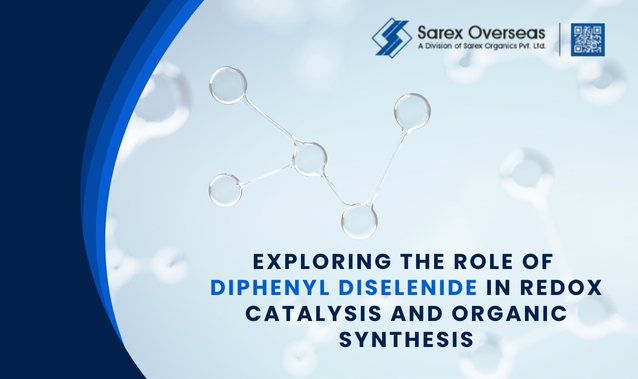Understanding the Chemical Identity of Diphenyl Diselenide
Diphenyl Diselenide (Ph₂Se₂) is a yellow crystalline solid with two connected phenyl groups joined with selenium-selenium bonds. It is usually prepared from phenylmagnesium bromide, reacted with selenium and then oxidised with bromine. It is soluble in dichloromethane and THF, but insoluble in water. It has a melting point between 59 and 61°C and it is sensitive to air and moisture for shelf life.
Important Functions in Redox Catalysis
In redox catalysis, Diphenyl Diselenide acts as a dynamic mediator. It continuously cycles between reactive selenium intermediates and the dimeric form of itself, such that it can carry out reductive and oxidative transformations. These cycles often involve selenol intermediates or selenenic acids that react with substrates and give rise to the parent compound for regeneration. It has been demonstrated experimentally that it can be utilised for the catalytic oxidation of thiols under mild conditions. Its flexibility has made it a significant catalyst for green chemistry through offering a less toxic solution over more energy-hungry metal catalysts.
Applications in Organic Synthesis
This compound plays an important role in various synthetic transformations:
1. Elimination and Alpha-Selanylation
Diphenyl Diselenide enables the selective addition of the PhSe group to molecules with carbonyl functionality. It can be converted into unsaturated products with selenoxide elimination, an important double-bond forming technique for syntheses within natural product chemistry.
2. Radical Cyclisation Reactions
Recent research has highlighted the use of this compound in radical-initiated reactions. It facilitates the formation of heterocyclic structures such as selenophenoquinolines by promoting efficient radical cyclisations, even under room temperature.
3. Heterocycle Construction
It also assists with the preparation of oxazoles and benzotriazoles with reactions involving copper catalysis and Selectfluor. These procedures offer good toleration of functional groups along with high yields.
Why Diphenyl Diselenide is Preferred?
The reasons behind the popularity of Diphenyl Diselenide can be traced:
- High reactivity under mild conditions
- Versatility of activity within oxidative, radical, and electrophilic pathways
- Low requirement for loading, frequently below 10 mol%
- Suitability with metal-free systems in most reactions
Mechanistically, the molecule proceeds through reactive species that carry out bond-forming steps, returning subsequently to the parent structure. This redox cycling is efficient and repeatable. Moreover, computational work and experimental data validate its effect on promoting electron transfer and bond activation without producing unwanted waste products.
Safety and Handling Notes
In spite of its utility, Diphenyl Diselenide should be treated carefully. It is toxic and necessitates use in well-ventilated areas or under an inert condition. Normal laboratory precaution is required in storing it, handling it, and disposing of it.
Conclusion
Diphenyl Diselenide is increasingly popular in chemistry because of its efficiency, selectivity and versatility in redox and synthesis chemistry. Because it can react under environmentally friendly conditions, it is a favourite in academic and industrial laboratories.
For high-end quality Diphenyl Diselenide and other fine chemistry solutions, Sarex provides a trusted marketplace for high-performance innovative chemistry products. Look for Sarex for reliable excellence in the realm of chemical innovation.

